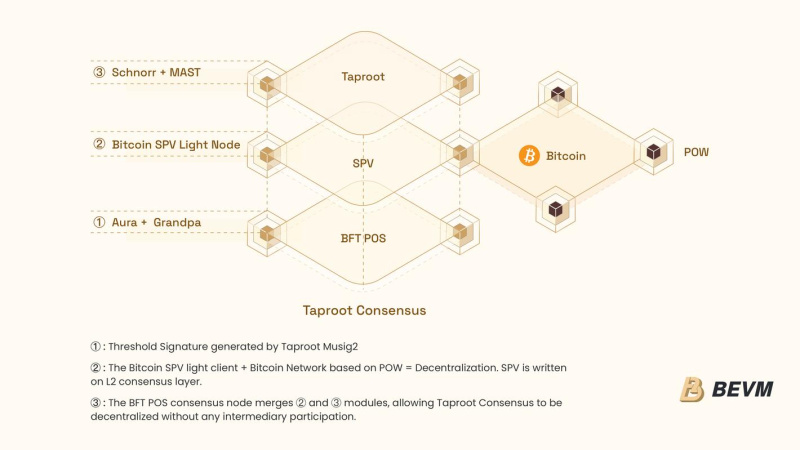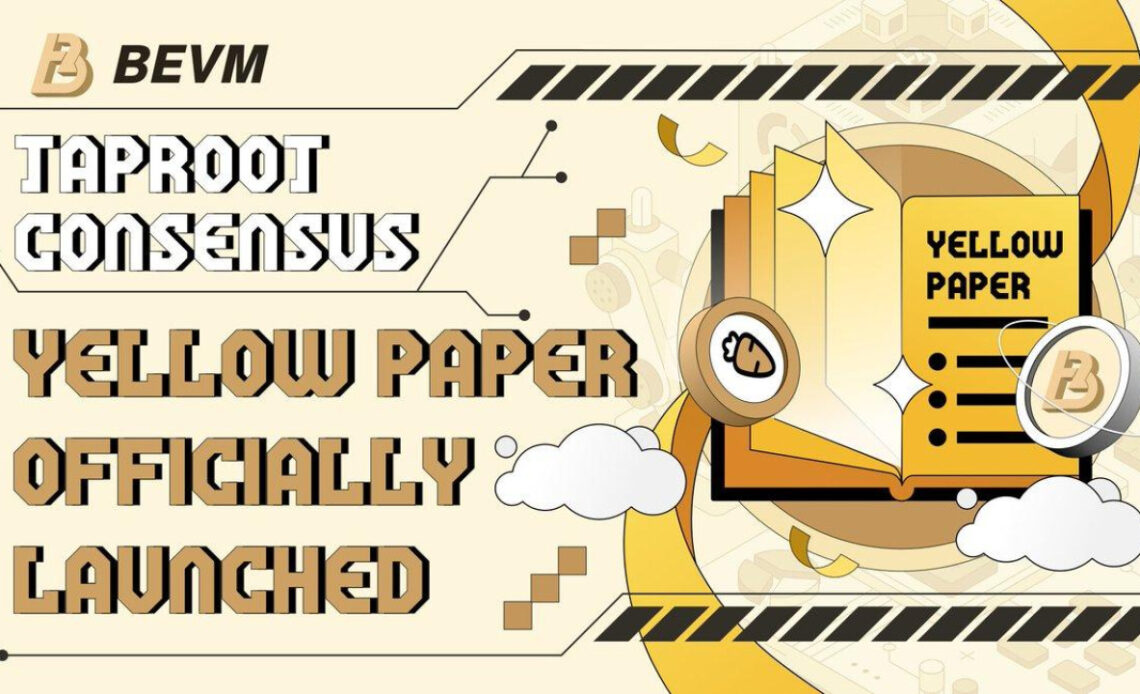Cardiff, 英国, May 26th, 2024, Chainwire
On May 20, 2024, the Bitcoin Layer2 development team BEVM released the technical yellow paper titled “Taproot Consensus: A Decentralized BTC Layer2 Solution.” This paper details the implementation of Taproot Consensus, leveraging native Bitcoin technologies such as Schnorr signatures, MAST, and Bitcoin SPV nodes to build a fully decentralized BTC Layer2 solution. Taproot Consensus represents a significant leap in native Bitcoin scalability, combining existing Bitcoin technologies innovatively without modifying Bitcoin’s core code.
I. History of Bitcoin’s Technical Iterations
- October 31, 2008: Satoshi Nakamoto published “Bitcoin: A Peer-to-Peer Electronic Cash System,” introducing Bitcoin and the concept of SPV (Simple Payment Verification).
- January 3, 2009: Nakamoto mined the Genesis Block, launching Bitcoin. The original code used ECDSA for digital signatures instead of the more suitable Schnorr signatures, which were under patent protection at the time. Schnorr signatures retain all the functionalities and security assumptions of ECDSA and can surpass the 15-signature limit of ECDSA, enabling the management of Bitcoin with thousands of addresses without affecting signing speed.
- 2018: Bitcoin core developers proposed integrating Schnorr signatures into the Bitcoin network.
- November 14, 2021: The Taproot upgrade integrated Schnorr signatures and introduced MAST (Merkelized Abstract Syntax Trees), enabling smart contract-like capabilities and decentralized multi-signature management.
- The Taproot Consensus solution by BEVM builds on these advancements, combining Schnorr signatures and MAST to manage multi-signature addresses and enable complex business scenarios in Bitcoin Layer2.
II. Overview of the Taproot Consensus Solution:
The yellow paper begins by highlighting Bitcoin’s non-Turing complete nature and limited functionality for smart contracts. It argues for using Bitcoin’s existing capabilities to build a decentralized Layer2 solution rather than modifying Bitcoin Layer1.
BEVM’s Taproot Consensus combines Bitcoin’s Taproot technology (Schnorr signatures and MAST), Bitcoin SPV light nodes, and the BFT PoS consensus mechanism to create a decentralized and consistent Layer2 network.
III. Detailed Explanation of Taproot Consensus Architecture

The Taproot Consensus…
